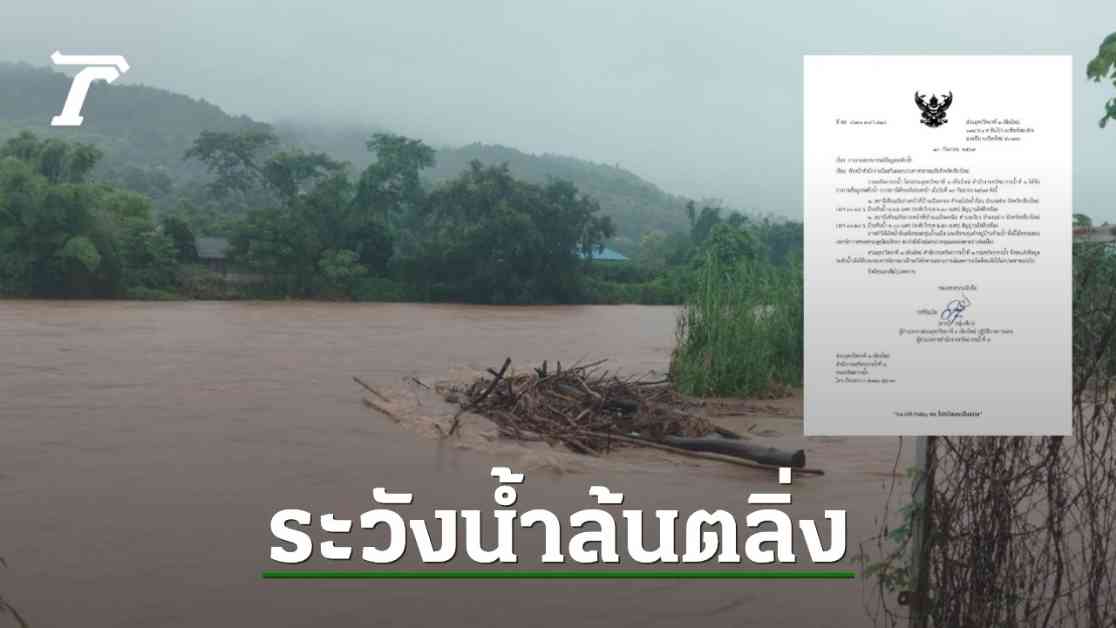Water Level Alert: Chiang Mai Faces Crisis at 2 Locations
The Department of Water Resources has issued a warning regarding the water levels in the Chiang Mai area, as they have reached a critical point at two locations. With yellow warning lights flashing, there is a possibility of flooding, prompting authorities to prepare for potential water pumping operations on September 10, 2028.
At the Roi Tosai Rainbow Station in Mae Rim district, the water level has risen to 2.24 meters, just below the critical threshold of 2.30 meters. Similarly, at the Mae Jai Nuea Station in Wiang district, the water level is at 2.00 meters, approaching the critical level of 2.50 meters. This situation could lead to flooding downstream along the Mae Jai River and in low-lying areas of local villages.
The Department of Water Resources, specifically the 1st Hydrological Engineering Office in Chiang Mai, has been monitoring the situation closely. Data from early warning stations indicates that continuous rainfall has contributed to the rising water levels. Radar imagery from the Meteorological Department has confirmed ongoing rainfall in the region, exacerbating the risk of flooding.
Precautionary Measures and Preparedness
In response to the escalating water levels, the 1st Irrigation Office has installed water pumps to mitigate the impact of potential floods. This proactive approach aims to ensure the safety and readiness of the local communities in the affected areas.
Authorities are urging residents living near the riverbanks and in low-lying areas to remain vigilant and take necessary precautions. In the event of evacuation orders, it is essential for residents to follow instructions from local authorities to ensure their safety and well-being.
Community Engagement and Support
Local communities play a crucial role in disaster preparedness and response efforts. Community leaders and volunteers are mobilizing resources and coordinating efforts to support vulnerable populations and mitigate the impact of flooding.
Community-based early warning systems are being utilized to disseminate timely information and alerts to residents in at-risk areas. This grassroots approach enhances communication and coordination among community members, enabling swift responses to changing conditions.
As part of community engagement initiatives, educational campaigns on flood preparedness and response strategies are being conducted. These efforts aim to empower residents with the knowledge and skills needed to protect themselves and their families during emergencies.
Collaboration and Coordination
Effective coordination among relevant government agencies, local authorities, and stakeholders is essential in addressing the challenges posed by rising water levels. Multi-agency task forces are being activated to streamline response efforts and ensure a cohesive approach to flood management.
Collaborative efforts between government agencies, non-governmental organizations, and community groups are vital in pooling resources and expertise to effectively respond to the crisis. By leveraging collective strengths and resources, stakeholders can enhance the resilience of communities and minimize the impact of flooding.
Continuous monitoring and assessment of the situation are essential to inform decision-making and response strategies. Real-time data from monitoring stations and weather forecasts enable authorities to anticipate potential risks and take proactive measures to protect lives and property.
In conclusion, the water level alert in the Chiang Mai area serves as a timely reminder of the importance of disaster preparedness and community resilience. By working together and taking proactive measures, we can strengthen our ability to respond to emergencies and safeguard the well-being of our communities.




















